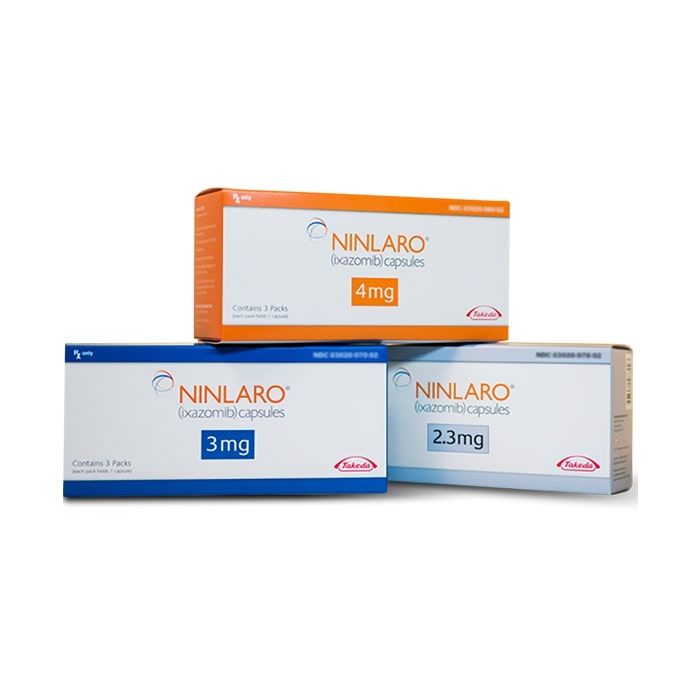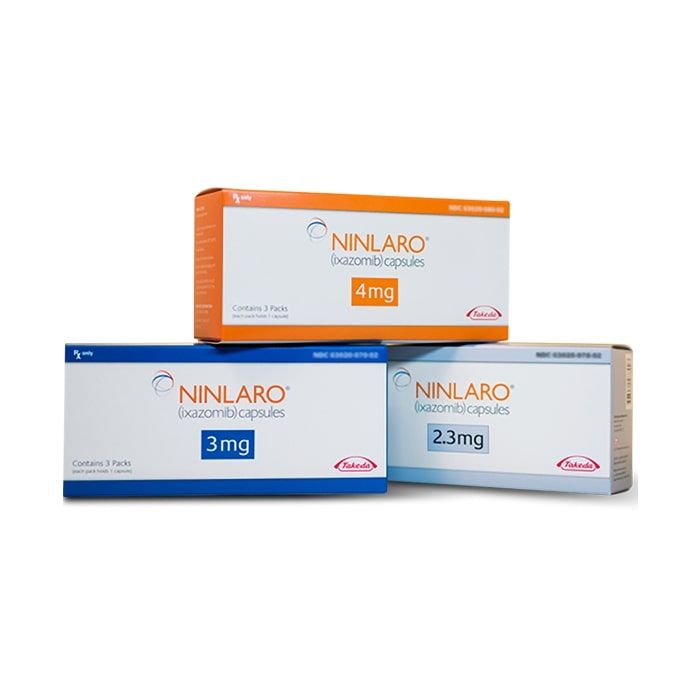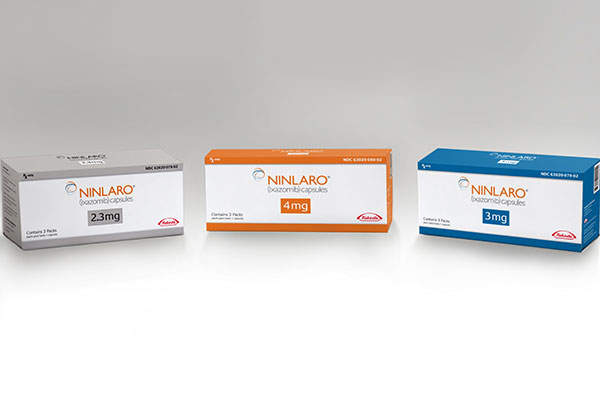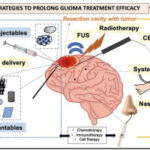Introduction to NINLARO® (ixazomib) in combination with lenalidomide

NINLARO® (ixazomib) in combination with lenalidomide is a treatment strategy used for multiple myeloma, a type of cancer that affects plasma cells in the bone marrow.
This combination therapy involves the use of NINLARO®, an orally bioavailable reversible and selective proteasome inhibitor, and lenalidomide, an immunomodulatory drug.
The aim of combining these two drugs is to enhance their effectiveness in slowing down the progression of multiple myeloma and improving overall patient outcomes.
By targeting different pathways involved in the growth and survival of cancer cells, NINLARO® and lenalidomide work synergistically to inhibit tumor growth, promote cell death, and modulate the immune system against cancer cells.
This combination therapy has shown promising results in clinical trials, with studies demonstrating improved response rates and increased progression-free survival compared to lenalidomide alone.

The safety profile of NINLARO® in combination with lenalidomide has also been evaluated, and the most common side effects include gastrointestinal disturbances, fatigue, rash, and peripheral neuropathy.
When administering this treatment combination, healthcare professionals should follow specific guidelines and consider dosage adjustments based on individual patient characteristics and treatment response.
It is important to be aware of potential drug interactions, as certain medications may affect the efficacy or safety of NINLARO® and lenalidomide.
In conclusion, the combination of NINLARO® (ixazomib) and lenalidomide holds promise as an effective treatment option for patients with multiple myeloma. This combination therapy offers the potential for improved outcomes and a more targeted approach to combating this complex disease. As research continues and new developments emerge, the future of multiple myeloma treatment looks increasingly promising.
Overview of NINLARO® and lenalidomide combination therapy

NINLARO® and lenalidomide combination therapy is a treatment approach for multiple myeloma, using NINLARO®, a proteasome inhibitor, and lenalidomide, an immunomodulatory drug. This combination targets different pathways involved in tumor growth and promotes cell death. Clinical trials have shown improved response rates and increased progression-free survival compared to lenalidomide alone. Common side effects include gastrointestinal disturbances, fatigue, rash, and peripheral neuropathy. Guidelines for administration and dosage adjustments should be followed, and potential drug interactions should be considered. This combination therapy holds promise for improving outcomes in multiple myeloma patients.
Benefits of combining NINLARO® with lenalidomide

Combining NINLARO® with lenalidomide offers several benefits in the treatment of multiple myeloma. Firstly, this combination targets different pathways involved in tumor growth, enhancing the effectiveness of the treatment. Secondly, clinical trials have shown improved response rates and increased progression-free survival compared to using lenalidomide alone. Lastly, the combination therapy has demonstrated efficacy in patients with high-risk abnormalities such as 1q21 amplification and t(4;14). This combination holds promise for improving outcomes in multiple myeloma patients and provides a valuable treatment option.
Understanding NINLARO® (ixazomib) and lenalidomide individually

NINLARO® (ixazomib) is an orally bioavailable reversible and selective proteasome inhibitor that binds to the beta 5 subunit of the 20S proteasome, inhibiting its chymotrypsin-like activity. Lenalidomide is an immunomodulatory drug that has shown efficacy in the treatment of multiple myeloma. Understanding the individual mechanisms of action and benefits of NINLARO® and lenalidomide is crucial for optimizing combination therapy and achieving better treatment outcomes. The combination of these two drugs offers a promising approach to tackle multiple myeloma and enhance patient responses.
Mechanism of action of NINLARO®

The mechanism of action of NINLARO® involves its ability to bind to the beta 5 subunit of the 20S proteasome, inhibiting its chymotrypsin-like activity. This inhibition leads to the accumulation of misfolded proteins and triggers apoptosis in myeloma cells. By targeting the proteasome pathway, NINLARO® disrupts the cell cycle and inhibits tumor growth. This unique mechanism of action sets NINLARO® apart as a valuable treatment option for patients with multiple myeloma.
Benefits of lenalidomide in cancer treatment

Lenalidomide has shown significant benefits in cancer treatment, particularly in patients with multiple myeloma. It works by stimulating the immune system, inhibiting the growth of cancer cells, and reducing inflammation. The use of lenalidomide in combination with other drugs, such as ixazomib, has been shown to improve outcomes, including overall survival and progression-free survival. Additionally, lenalidomide can help manage symptoms, such as anemia and bone pain, and reduce the need for other supportive treatments. It is a valuable therapy option for patients with relapsed or refractory multiple myeloma.
Clinical studies and efficacy of NINLARO® in combination with lenalidomide

Clinical studies have demonstrated the efficacy of combining NINLARO® (ixazomib) with lenalidomide in the treatment of multiple myeloma. These studies have shown improved outcomes, including overall survival and progression-free survival, when compared to lenalidomide alone. The combination therapy has also been effective in managing symptoms such as anemia and reducing the need for other supportive treatments. These findings highlight the importance of considering NINLARO® in combination with lenalidomide as a valuable treatment option for patients with relapsed or refractory multiple myeloma.
Results from trials evaluating the effectiveness of NINLARO® and lenalidomide

Clinical trials evaluating the effectiveness of NINLARO® (ixazomib) in combination with lenalidomide have shown promising results. Patients treated with this combination therapy experienced better progression-free survival compared to historical data. The addition of NINLARO® to lenalidomide maintenance has shown positive outcomes, indicating its potential as an effective treatment option for patients with relapsed or refractory multiple myeloma. These results support the use of NINLARO® in combination with lenalidomide as a viable therapeutic approach for managing this disease.
Safety profile of the combined therapy

The safety profile of the combined therapy consisting of NINLARO® (ixazomib) and lenalidomide has been assessed in clinical studies. The results indicate that this combination therapy is generally well-tolerated by patients with multiple myeloma. Common side effects include gastrointestinal symptoms, fatigue, and hematological abnormalities. Close monitoring and appropriate management of these side effects are crucial to ensure patient safety and optimize treatment outcomes. Healthcare professionals should provide comprehensive education and support to patients undergoing NINLARO® and lenalidomide therapy to minimize potential risks and promote a safe treatment experience.
Administration and dosage recommendations for NINLARO® and lenalidomide

When administering NINLARO® in combination with lenalidomide, the recommended starting dose is 4 mg taken once a week on the same day and at approximately the same time for the first 3 weeks of a 4-week treatment cycle. Dose reductions may be necessary based on adverse reactions. Close monitoring of hematologic and nonhematologic toxicities is essential, with dosage adjustments made as needed for patients with hepatic or renal impairment. NINLARO® should be stored at room temperature and not above 30°C (86°F).
Guidelines for administering NINLARO® and lenalidomide in combination

When administering NINLARO® and lenalidomide in combination, it is important to follow specific guidelines. Patients should take NINLARO once a week on the same day and at approximately the same time for the first 3 weeks of a 4-week cycle. This regimen also includes lenalidomide and dexamethasone. Dosage modifications may be necessary based on hematologic and nonhematologic toxicities, as well as for patients with hepatic or renal impairment. NINLARO should be stored at room temperature and not above 30°C (86°F).
Dosage adjustments and considerations

Dosage adjustments and considerations are an important aspect of administering NINLARO® and lenalidomide in combination. Based on hematologic and nonhematologic toxicities, as well as hepatic or renal impairment, dosage modifications may be necessary. It is crucial to follow guidelines for the appropriate dose reduction instructions in these cases. Healthcare providers should also be aware that a 3 mg dose of NINLARO is available for subsequent dose reductions due to adverse reactions. Ensuring the correct dosage is essential for optimal treatment outcomes.
Side effects and possible interactions of NINLARO® (ixazomib) with lenalidomide

Common side effects of NINLARO® (ixazomib) and lenalidomide in combination therapy include diarrhea, constipation, nausea, and vomiting, which can sometimes be severe. Patients should contact their healthcare provider if they experience any of these symptoms. Additionally, it is important to be aware of potential drug interactions when using NINLARO® with lenalidomide. Healthcare providers should review a patient’s medication history to identify any potential interactions that may affect treatment efficacy or increase the risk of adverse reactions. It is crucial to prioritize patient safety and monitor for any signs of interactions during treatment.
Common side effects of NINLARO® and lenalidomide

Common side effects of NINLARO® and lenalidomide in combination therapy include diarrhea, constipation, nausea, and vomiting, which can sometimes be severe. Patients should contact their healthcare provider if they experience any of these symptoms.
Potential drug interactions to be aware of

Potential drug interactions are important to be aware of when using NINLARO® (ixazomib) in combination with lenalidomide. It is crucial to inform healthcare providers about all the medications, including prescription, over-the-counter, and herbal products, that you are taking. Certain drugs may interact with NINLARO® and lenalidomide, leading to decreased effectiveness or increased side effects. Healthcare providers can help determine if any adjustments are necessary to ensure the safe and effective use of these medications together. Always follow the guidance of your healthcare provider regarding potential drug interactions.
Conclusion

In conclusion, the combination of NINLARO® (ixazomib) and lenalidomide has shown promising results in the treatment of multiple myeloma. Clinical studies have demonstrated longer progression-free survival and limited additional toxic effects when compared to other therapies. It is important for healthcare providers to be aware of potential drug interactions and make necessary adjustments to ensure safe and effective use. The combination therapy offers a potential treatment option for individuals who have received at least one prior therapy. Further research and development in this field may lead to improved outcomes for patients with multiple myeloma.
Summary of the benefits and considerations of using NINLARO® with lenalidomide

Summary of the benefits and considerations of using NINLARO® with lenalidomide:
- The combination therapy of NINLARO® (ixazomib) and lenalidomide has shown promising results in the treatment of multiple myeloma.
- Clinical studies have demonstrated longer progression-free survival and limited additional toxic effects compared to other therapies.
- Healthcare providers should be aware of potential drug interactions and make necessary adjustments for safe and effective use.
- The combination therapy offers a potential treatment option for individuals who have received at least one prior therapy.
- Further research and development in this field may lead to improved outcomes for patients with multiple myeloma.
Future outlook and developments in multiple myeloma treatment

Future outlook and developments in multiple myeloma treatment hold promise for improved outcomes. Researchers are exploring new treatment approaches, including targeted therapies and immunotherapies, to enhance effectiveness and decrease adverse effects. These advancements aim to provide more personalized and precise treatment options for patients with multiple myeloma. Additionally, ongoing clinical trials are investigating novel drug combinations and therapies to further optimize treatment strategies. The continuous efforts in research and development offer hope for even better outcomes and quality of life for individuals living with this disease.
What is NINLARO® used for?
NINLARO® is used in combination with lenalidomide as a treatment strategy for multiple myeloma, a type of cancer that affects plasma cells in the bone marrow.How does the combination therapy of NINLARO® and lenalidomide work?
NINLARO® is an orally bioavailable reversible and selective proteasome inhibitor, while lenalidomide is an immunomodulatory drug. By targeting different pathways involved in the growth and survival of cancer cells, these two drugs work synergistically to inhibit tumor growth, promote cell death, and modulate the immune system against cancer cells.What are the benefits of combining NINLARO® and lenalidomide?
The aim of combining NINLARO® and lenalidomide is to enhance their effectiveness in slowing down the progression of multiple myeloma and improving overall patient outcomes. Clinical trials have shown promising results, with improved response rates and increased progression-free survival compared to lenalidomide alone.
References
https://www.ncbi.nlm.nih.gov/pmc/articles/PMC6055619
https://www.ncbi.nlm.nih.gov/pmc/articles/PMC5013850
https://www.ninlaro.com/clinical-studies
https://www.ncbi.nlm.nih.gov/pmc/articles/PMC7497066
https://pubmed.ncbi.nlm.nih.gov/34992070
https://www.ninlarohcp.com/mechanism-of-action
https://classic.clinicaltrials.gov/ct2/show/NCT03173092
https://www.ninlarohcp.com/dosing-administration
https://reference.medscape.com/drug/ninlaro-ixazomib-1000064
https://www.ninlaro.com/how-to-take
https://www.ninlaro.com/side-effects
https://www.ninlarohcp.com/patient-management
https://www.ncbi.nlm.nih.gov/pmc/articles/PMC5574012









